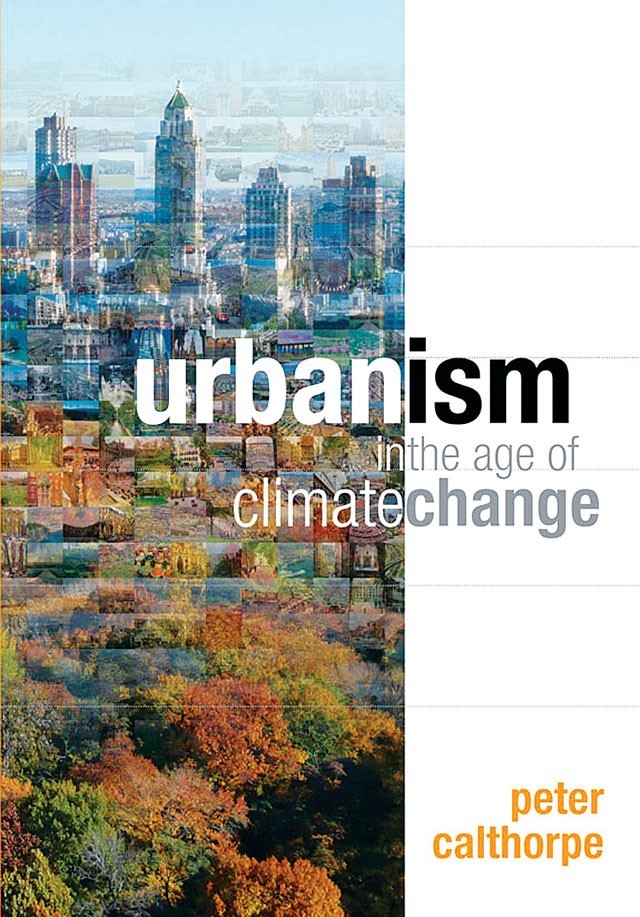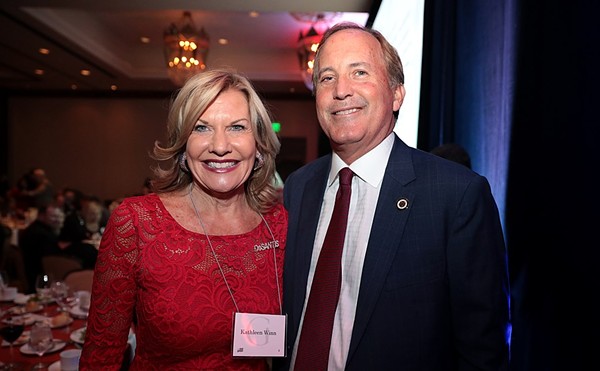Peter Calthorpe is probably the most respected urban planner in the world, which has led municipalities from California to China to ask for his assistance in creating livable, sustainable cities. His new book, Urbanism in the Age of Climate Change, accepts that climate change is a real threat, with potentially catastrophic consequences that can only be averted if we radically reduce our energy consumption.
Calthorpe doesn’t believe that green technologies alone can meet the challenge. Conservation achieved by traveling less and walking more is key. But not everyone has to abandon the suburbs for city apartment blocks. A combination of revived downtowns, along with building pockets of walkable, village-like centers in outlying areas is part of the New Urbanism vision of “transit-oriented development.”
We caught up with Calthorpe at the Pearl Stables, where he gave the first Sustainable Urban Development Lecture presented by the San Antonio chapter of the American Institute of Architects.
Who did you address your latest book to?
The goal of writing the book was to talk to the environmental community, who too often don’t see land use policy as a prime ingredient in our environmental sustainability and climate change bag of solutions. As a matter of fact, if you look at Gore’s new book, it doesn’t even come up. So everyone seems to think it is about technology, it is all about industrial change. Those are very important components. But if you try to build a renewable energy society on top of an incredibly inefficient set of lifestyles, it gets very difficult. So, conservation first, and the biggest component of conservation is urbanism.
Across the U.S. and certainly here in SA, infill can pay an important part in improving our cities. The comment is frequently made that investment is determined by market forces and really can’t be legislated. How do we do it?
The problem in many places in the country [is that] zoning prevents the infill that is appropriate — mixed use and high-density. Now, in many parts of Texas there is no zoning as a hurdle. For example, in Dallas, where the DART [Dallas Area Rapid Transit] goes, you are getting very healthy infill and redevelopment of the mixed-use and high-density kind. So the market is operating beautifully there when they get a clear signal. I think the issue in Texas is that when you put in a rail, you’ve got a fixed investment that can’t change, and that becomes the foundation for a marketplace investment that makes sense. But if you have a bus line, it’s variable, it doesn’t attract all segments of the economy, and therefore it’s not as strong a locational factor. I think that the market forces will work, but only on the shoulders of really serious transit investments.
Then it seems that SA has an opportunity, as the only major city in the country without a rail system. Any suggestions on how we should proceed?
Yes. Build it! I also applaud that VIA has a diverse system in mind, a hierarchy of commute trains, light rail, BRT (bus rapid transit), and street cars. It is that kind of layering that makes a transit system truly work.
How does what you call an “Urban Network” work?
It’s a street network that gets back to a more interconnected grid, where all the trips aren’t forced onto one arterial road. … Local trips can be on local streets, and traffic can be dispersed everywhere, and every street is comfortable to walk and bike on. That’s a whole different DNA for the city than the road structure that every engineer is taught now.
What strengths does SA have?
Because there wasn’t completely destructive urban renewal, you have an urban center that is truly extraordinary. You have the legacy of the WPA and the River Walk, you have a really gorgeous historic architectural reservoir in the downtown. So you have a core in SA that hasn’t been gutted. That’s a big win.
You posit urbanism not as simply numerical density, but as a list of attributes, or qualities. Something that can even happen in the suburbs.
The old streetcar suburbs were very urban. Our small towns in America, rural towns, were very urban. Elm Street led to Main Street, and you could get there by foot very easily. It was one of the most powerful paradigms of urbanism in the world, and of course we destroyed it all.
What do you think SA’s most urban qualities are?
Your downtown has a robust street grid, it has buildings at the sidewalk, and street sections that are narrow enough to be comfortable for the pedestrian. And there is a mix of building, but probably not enough housing, but that is an opportunity right there, because once you start building housing downtown people will learn what a joy it is to live there. It’s not a choice for everybody, but the answer is there is no one size that fits all. For too long we have believed that everybody needs to live in a single family home. •


















